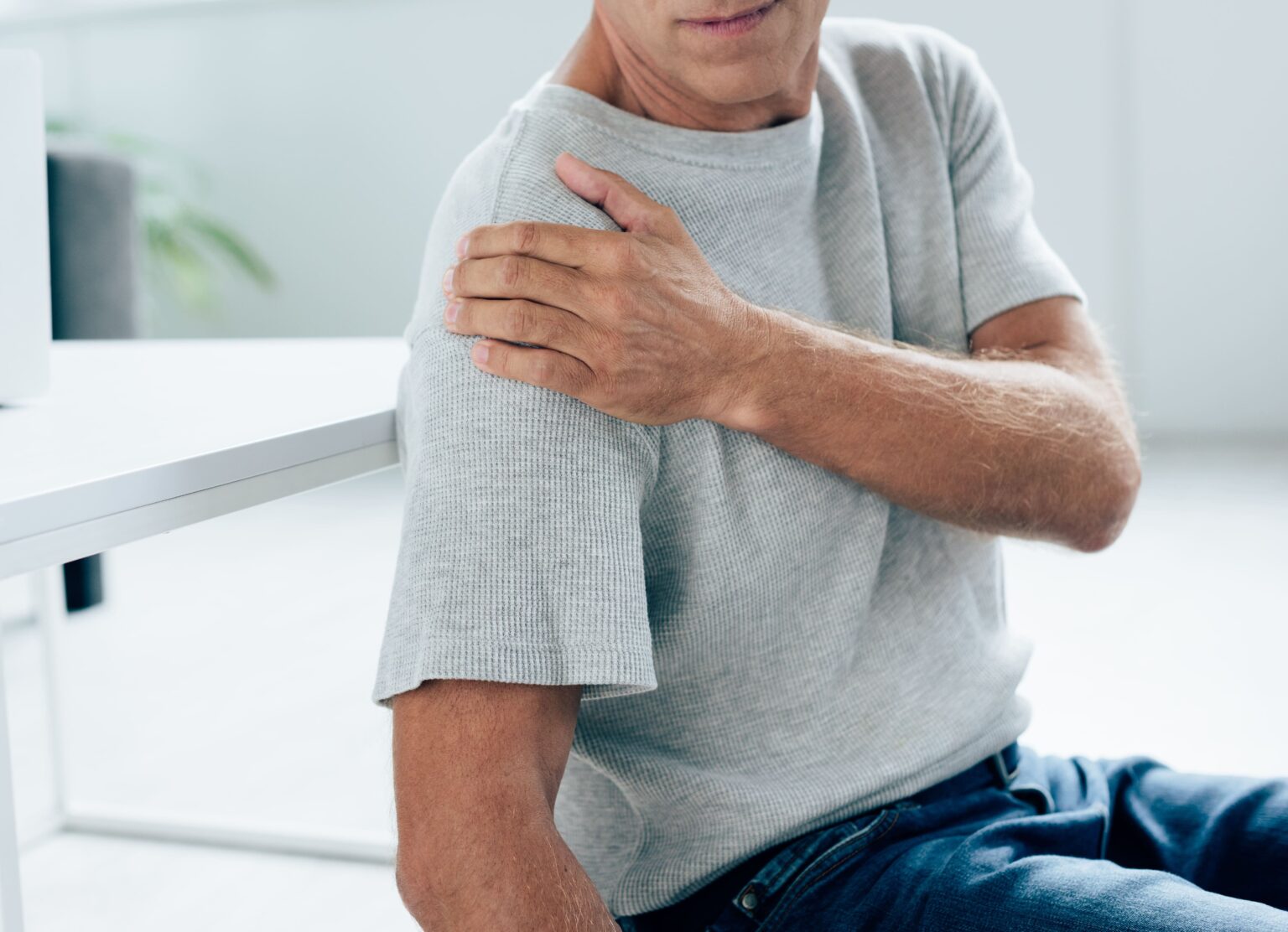Schedule An Appointment With Us
Are Your Symptoms Affecting Your Quality Of Life?
Consult our MOH-accredited orthopaedic specialist for an accurate diagnosis & personalised treatment plan today.

MBBS (S’PORE)
MRCS (Ireland)
MMed (Ortho)
FRCSEd (Ortho)

Glenohumeral arthritis is a degenerative joint disease affecting the shoulder’s glenohumeral joint, where the humerus (upper arm bone) meets the scapula (shoulder blade). Characterized by the wearing away of cartilage, it leads to pain, stiffness, and reduced mobility.
As the disease progresses, patients may experience significant discomfort and disability, impacting their quality of life. Early and accurate diagnosis is key to effective management and slowing the condition’s progression.
Glenohumeral arthritis stems from several factors that contribute to the deterioration of the joint’s cartilage. Primary causes include:
Common symptoms of Glenohumeral Arthritis include:


Schedule An Appointment With Us
Consult our MOH-accredited orthopaedic specialist for an accurate diagnosis & personalised treatment plan today.
Diagnosis of Glenohumeral Arthritis includes a comprehensive approach for accurate guidance, it typically involves:
The discussion includes the start of the symptoms, any history of trauma, family history of arthritis, and how the condition impacts daily life. Examinations may also be done, this entails a comprehensive examination of the shoulder, assessing the range of motion, pain points, mobility or age, or other adversities.
Treating glenohumeral arthritis non-surgically aims to alleviate pain, reduce inflammation, and improve joint function, ideally delaying or avoiding the need for surgery. Common leading non-surgical interventions include:
Tailored exercises to strengthen the rotator cuff and shoulder-stabilizing muscles, enhancing joint support, and mobility.
NSAIDs (non-steroidal anti-inflammatory drugs) to manage pain and reduce inflammation. For some patients, acetaminophen may be recommended as an alternative.
Administered directly into the shoulder joint, these can provide significant pain relief and reduce inflammation for short to medium terms.
Sometimes used to supplement the natural ‘lubricating’ fluid in the shoulder joint, potentially improving mobility and reducing discomfort.
Adjusting lifestyle and activities to avoid aggravating the arthritis, including teaching lifting and weight-bearing limitations.
For cases of glenohumeral arthritis where non-surgical treatments fail to provide adequate relief, surgical options may be considered. These interventions include:

MBBS (S’pore)
MRCS (Ireland)
MMed (Ortho)
FRCSEd (Ortho)
Dr Kau (许医生) is a Fellowship trained Orthopaedic Surgeon with a subspecialty interest in Hip and Knee surgery and has been in practice for more than 15 years.
He is experienced in trauma and fracture management, sports injuries, and joint replacement surgery.
While it may not be possible to prevent glenohumeral arthritis entirely, certain measures can reduce the risk or slow the progression of the disease:
For Singaporeans, Singapore Permanent Residents and Foreigners.
Please speak to our friendly clinic staff about using your insurance plans.

If you have any enquiry, please do get in touch. Leave us a message and we will get back to you shortly.
Yes, glenohumeral arthritis can affect both shoulders, although it might start in just one. It’s particularly common for systemic conditions like rheumatoid arthritis to involve both sides. Over time, wear and tear or the progression of an underlying disease can lead to symptoms developing in the other shoulder as well.
Unfortunately, glenohumeral arthritis is not reversible, as the damage to the cartilage in the joint cannot be naturally repaired by the body. However, treatment strategies can significantly reduce symptoms and slow the progression of the disease.
Diet can play a supportive role in managing glenohumeral arthritis. Anti-inflammatory foods, such as fruits, vegetables, nuts, and fish rich in omega-3 fatty acids, may help reduce joint inflammation and pain.
Recovery time from shoulder arthroplasty varies depending on the individual’s health, the type of surgery performed, and their commitment to post-surgical rehabilitation. Initially, movement is limited to promote healing, with a gradual introduction of physical therapy to restore range of motion and strength. Full recovery, where patients can return to their normal daily activities, often takes several months, but significant improvements can be noticed within the first few weeks post-operation.